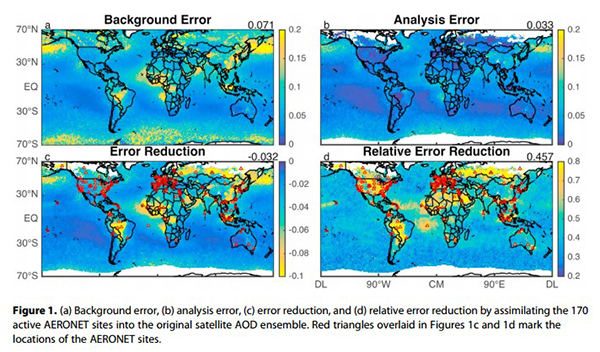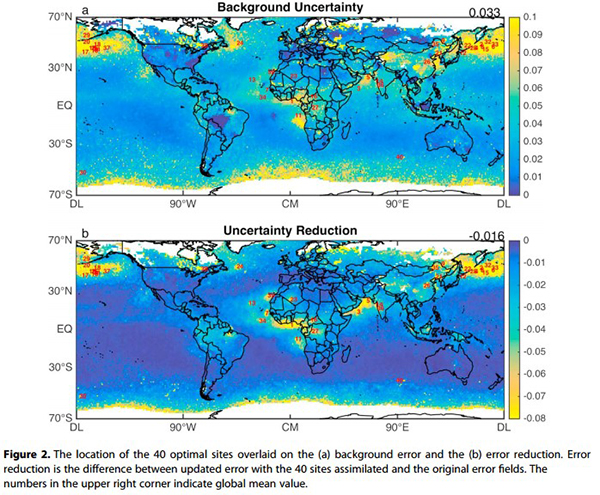最新科研进展
Reducing multisensor monthly mean aerosol optical depth uncertainty: 2. Optimal locations for potential ground observation deployments
Authors:
Jing Li1 , Xichen Li2, Barbara E. Carlson3, Ralph A. Kahn4 , Andrew A. Lacis3, Oleg Dubovik5,and Teruyuki Nakajima6
1 Department of Atmospheric and Oceanic Sciences, School of Physics, Peking University, Beijing, China, 2 Institute of Atmospheric Physics, Chinese Academy of Sciences, Beijing, China, 3 NASA Goddard Institute for Space Studies, New York, New York, USA, 4 NASA Goddard Space Flight Center, Greenbelt, Maryland, USA, 5 French National Centre for Scientific Research, University Lille 1, Villeneuve d’Ascq, France, 6 Japan Aerospace Exploration Agency, Tsukuba Space Center, Tsukuba, Japan
Abstract:
Surface remote sensing of aerosol properties provides “ground truth” for satellite and model validation and is an important component of aerosol observation system. Due to the different characteristics of background aerosol variability, information obtained at different locations usually has different spatial representativeness, implying that the location should be carefully chosen so that its measurement could be extended to a greater area. In this study, we present an objective observation array design technique that automatically determines the optimal locations with the highest spatial representativeness based on the Ensemble Kalman Filter (EnKF) theory. The ensemble is constructed using aerosol optical depth (AOD) products from five satellite sensors. The optimal locations are solved sequentially by minimizing the total analysis error variance, which means that observations at these locations will reduce the background error variance to the largest extent. The location determined by the algorithm is further verified to have larger spatial representativeness than some other arbitrary location. In addition to the existing active Aerosol Robotic Network (AERONET) sites, the 40 selected optimal locations are mostly concentrated on regions with both high AOD inhomogeneity and its spatial representativeness, namely, the Sahel, South Africa, East Asia, and North Pacific Islands. These places should be the focuses of establishing future AERONET sites in order to further reduce the uncertainty in the monthly mean AOD. Observations at these locations contribute to approximately 50% of the total background uncertainty reduction.
Key Points:
? An EnKF-based method is proposed to determine optimal location of ground aerosol observation sites
? The optimal sites have large spatial representativeness and serve to reduce monthly mean AOD uncertainty
? West Africa, North India, East Asia, and South Asia should be the focus of future ground site deployment


Citation:
Li, J., X. Li, B. E. Carlson, R. A. Kahn, A. A. Lacis, O. Dubovik, and T. Nakajima (2017), Reducing multisensor monthly mean aerosol optical depth uncertainty: 2. Optimal locations for potential ground observation deployments, J. Geophys. Res. Atmos., 122, 3920–3928, doi:10.1002/2016JD026308.
